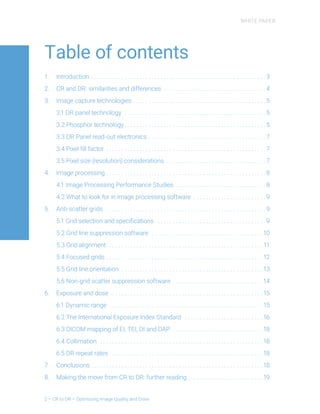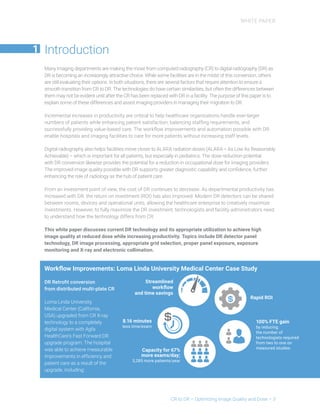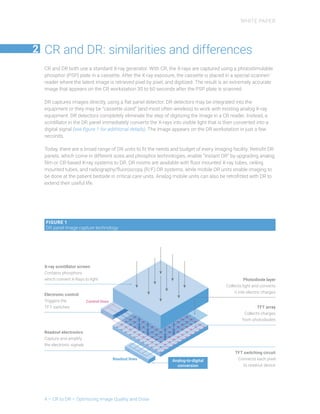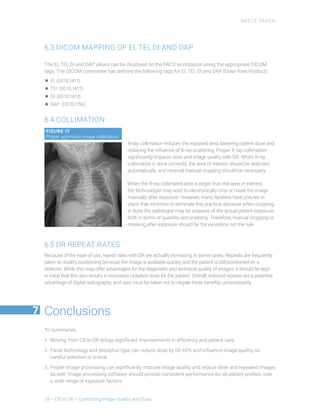This white paper discusses optimizing image quality and dose when transitioning from computed radiography (CR) to digital radiography (DR). Key factors discussed include:
1) DR detector panel technologies like cesium iodide needle phosphors can improve image quality and reduce radiation dose compared to CR powder phosphors.
2) Pixel size, fill factor, and readout electronics influence image noise, with smaller pixel sizes and higher fill factors improving quality.
3) Image processing software, grid selection and alignment, collimation, and exposure monitoring are important to maximize the benefits of DR.
4) Case studies show transitioning to DR can increase productivity and patient throughput while achieving dose reduction goals. Proper



















